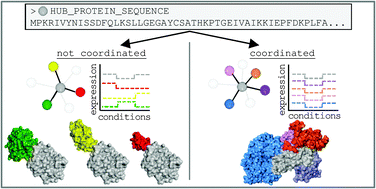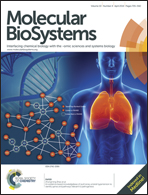Co-expression and co-localization of hub proteins and their partners are encoded in protein sequence†
Abstract
Spatiotemporal coordination is a critical factor in biological processes. Some hubs in protein–protein interaction networks tend to be co-expressed and co-localized with their partners more strongly than others, a difference which is arguably related to functional differences between the hubs. Based on numerous analyses of yeast hubs, it has been suggested that differences in co-expression and co-localization are reflected in the structural and molecular characteristics of the hubs. We hypothesized that if indeed differences in co-expression and co-localization are encoded in the molecular characteristics of the protein, it may be possible to predict the tendency for co-expression and co-localization of human hubs based on features learned from systematically characterized yeast hubs. Thus, we trained a prediction algorithm on hubs from yeast that were classified as either strongly or weakly co-expressed and co-localized with their partners, and applied the trained model to 800 human hub proteins. We found that the algorithm significantly distinguishes between human hubs that are co-expressed and co-localized with their partners and hubs that are not. The prediction is based on sequence derived features such as “stickiness”, i.e. the existence of multiple putative binding sites that enable multiple simultaneous interactions, “plasticity”, i.e. the existence of predicted structural disorder which conjecturally allows for multiple consecutive interactions with the same binding site and predicted subcellular localization. These results suggest that spatiotemporal dynamics is encoded, at least in part, in the amino acid sequence of the protein and that this encoding is similar in yeast and in human.


 Please wait while we load your content...
Please wait while we load your content...